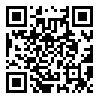目的 分析脑炎患者癫痫发作的危险因素,并构建风险预测模型。方法 选取414例脑炎患者作为研究对象,其中328例患者作为建模组,其余86例患者作为验证组。在建模组中,根据是否癫痫发作,将患者分为发作组(n=90)和无发作组(n=238),比较两组的一般资料、实验室检查指标、脑电图结果、颅内压。采用Logistic回归模型分析影响脑炎患者癫痫发作的危险因素。基于危险因素构建脑炎患者癫痫发作风险预测模型并使用列线图进行可视化。采用受试者工作特征(ROC)曲线和Hosmer⁃Lemeshow检验验证模型的预测效果。在验证组中,采用ROC曲线对风险预测模型进行外部验证。结果 在建模组中,发作组与无发作组患者在心率、收缩压、外周血白细胞计数和脑电图棘波增强发生情况的差异具有统计学意义(P<0.05)。多因素Logistic回归分析结果显示,心率升高、收缩压升高、外周血白细胞计数增加和脑电图棘波增强是脑炎患者癫痫发作的危险因素(P<0.05)。基于这些危险因素构建的风险预测模型的曲线下面积为0.820,拟合优度检验结果显示该模型准确性较高(χ2=8.725,P=0.366)。在验证组中,该模型的曲线下面积为0.828。结论 心率升高、收缩压升高、外周血白细胞计数升高和脑电图棘波增强时脑炎患者癫痫发作的风险较大。基于上述危险因素构建的脑炎患者癫痫发作风险预测模型具有较好的临床实用性及预测价值。
广西医学 页码:49-54
作者机构:朱雨婷,本科,主管护师,研究方向为神经重症护理。
基金信息:广西壮族自治区卫生健康委员会自筹经费科研课题(Z⁃A20220550)
- 中文简介
- 英文简介
- 参考文献
Objective To analyze the risk factors for epileptic seizure in patients with encephalitis, and to establish a risk prediction model. Methods A total of 414 patients with encephalitis were selected as the research subjects, therein 328 patients were regarded as modeling group, and the remaining 86 patients as the validation group. According to the presence of epileptic seizure, patients in the modeling group were divided into seizure group (n=90) or non⁃seizure group (n=238). Their general data, laboratory examination indices, electroencephalogram results, and intracranial pressure were compared between the two groups. The Logistic regression model was used to analyze the risk factors for affecting epileptic seizure in patients with encephalitis. Based on the risk factors, a risk prediction model for epileptic seizure in patients with encephalitis was established and visualized by employing a nomogram. The predictive effect of the model was validated by using the receiver operating characteristic (ROC) curve and Hosmer⁃Lemeshow test. In the validation group, the ROC curve was used for external validation on the risk prediction model. Results In the modeling group, there were statistically significant differences in heart rate, systolic blood pressure, peripheral white blood cell counts, and electroencephalogram spike wave enhancement between the seizure group and the non⁃seizure group (P<0.05). The results of multiple Logistic regression analysis revealed that elevated heart rate and systolic blood pressure, increased peripheral white blood cell counts, and enhanced electroencephalogram spike wave were the risk factors for epileptic seizure in patients with encephalitis (P<0.05). Area under the curve of the risk prediction model established based on the aforementioned risk factors was 0.820, and the results of goodness of fit interpreted that the model had relatively high accuracy (χ2=8.725, P=0.366). In the validation group, area under the curve of the model was 0.828. Conclusion Patients with encephalitis have a higher risk of epileptic seizure when their heart rate and systolic blood pressure are elevated, peripheral white blood cell counts are increased, and electroencephalogram spike wave is enhanced. The risk prediction model established based on the aforementioned risk factors for epileptic seizure in patients with encephalitis exerts favorable clinical practicality and predictive value.
-
无




 注册
注册 忘记密码
忘记密码 忘记用户名
忘记用户名 专家账号密码找回
专家账号密码找回 下载
下载 收藏
收藏
